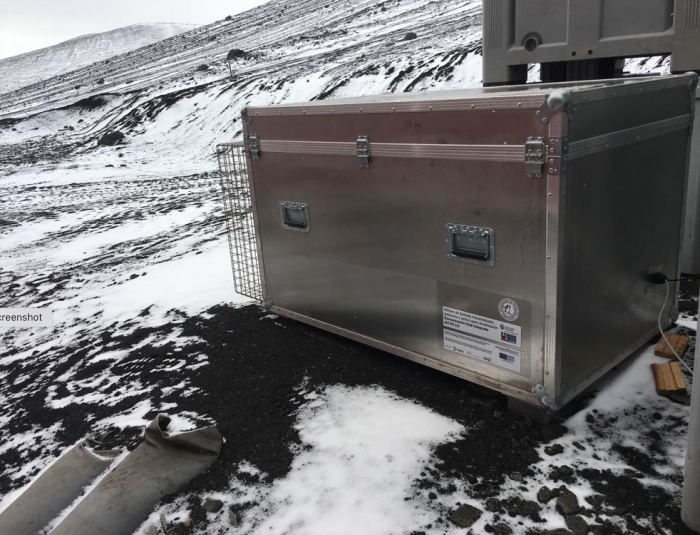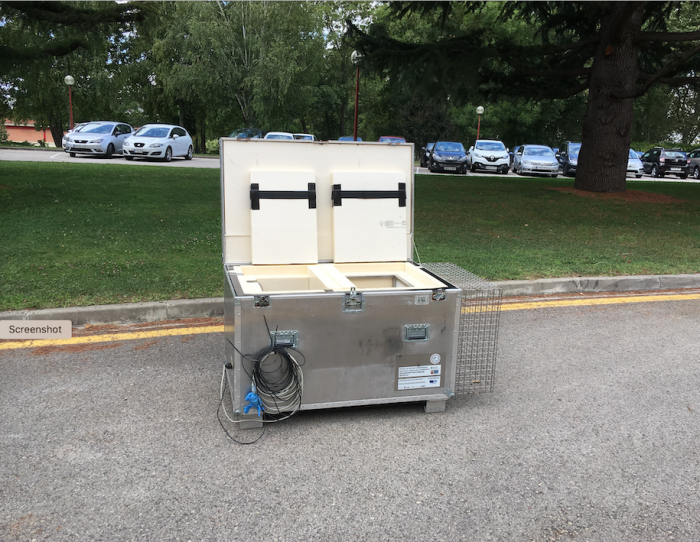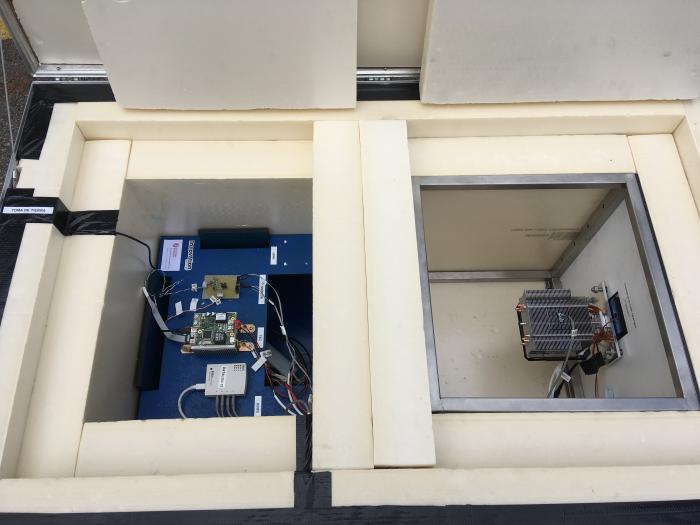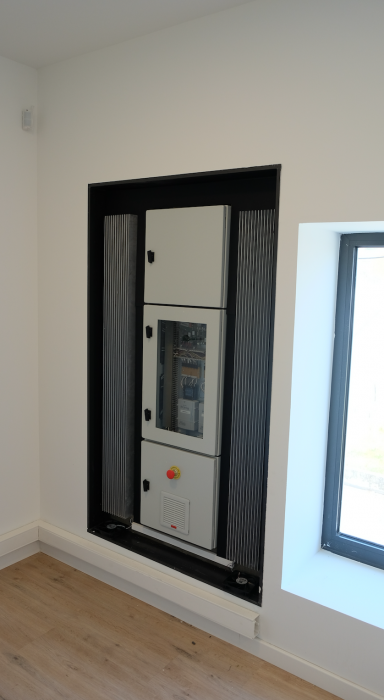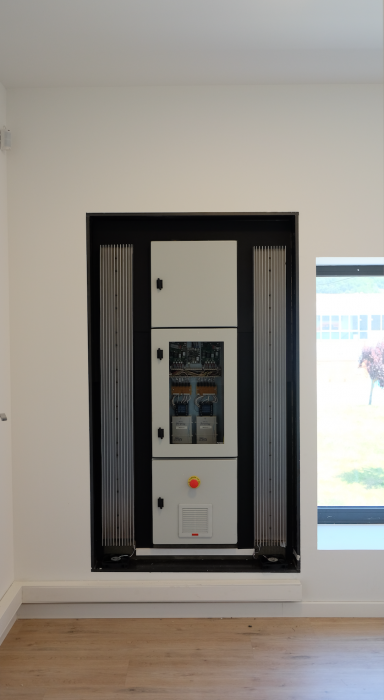I. SUMMARY INFORMATION
Project
267476
Status
Submitted
Award category
Techniques, materials and processes for construction and design
You want to submit
NEW EUROPEAN BAUHAUS AWARDS : existing completed examples
Project title
Ventilated Active Thermoelectric Envelop
Full project title
Integration development of a Ventilated Active Thermoelectric Envelope (VATE)
Description
The use of thermoelectricity in buildings represents a disruptive alternative for indoor thermal needs as it is a technology that allows the elimination of refrigerants. In this line of research, authors of this study have worked on the design and construction of several Ventilated Active Thermoelectric Envelope (VATE) prototypes.
Where was your project implemented in the EU?
Spain
Navarra
Escuela de Arquitectura
Pamplona
31009
When was your project implemented?
Has your project benefited from EU programmes or funds?
No
Which programme(s) or fund(s)? Provide the name of the programme(s)/fund(s), the strand/action line as relevant and the year.
II. DESCRIPTION OF THE PROJECT
Please provide a summary of your project
The use of thermoelectricity in buildings represents a disruptive alternative for indoor thermal needs as it is a technology that allows the elimination of refrigerants. In this line of research, authors of this study have worked on the design and construction of several Ventilated Active Thermoelectric Envelope (VATE) prototypes. A VATE is an industrial-scale modular prototype designed to be installed in the build- ing façade and thought to be an alternative solution for heating and cooling in Net Zero Energy Buildings.
Previous prototype modules have been tested to assess their heat power and performance in heating and cooling mode, which could be considered an initial approach towards the solution of designing VATEs that can be replicated. These works have resulted in an improvement of the COP of the system, the relationship of the Peltier cells and the ventilated façade, as well as with the interaction with photo- voltaic systems. However, the problem of the thermal bridge when the VATE was turned off remained.
Taking into consideration the lessons learned from previous construction solutions, the system has been redesigned, prioritizing in this case the reduction (not elimination) of the VATE thermal bridge. This article describes and justifies the solutions developed, presents the results achieved for heating and cooling, and raises points about what could evolve from this issue.
Please give information about the key objectives of your project in terms of sustainability and how these have been met
Authors of this study have been working on the design of a Thermoelectric Cooling and Heating Unit (TCHU) since 2009, which was later defined as Ventilated Active Thermoelectric Envelope (VATE). All of these previous projects were aimed at finding an innovative, modular and autonomous heating and cooling system for buildings embedded in the building envelope. The methodology used throughout the different studies was based on the construction of real scale prototypes monitored under real conditions.
Thermoelectricity is based on the use of Peltier cells, which currently have relatively small dimensions and low heat transfer capabilities. This means that in order to heat or cool a space it is necessary to use a considerable number of them. As has been demonstrated beforehand, this poses a problem for certain uses, but it also offers the advantage of modulation, so if the operation of a part is known, the results can be extrapolated to the entire system.
Please give information about the key objectives of your project in terms of aesthetics and quality of experience beyond functionality and how these have been met
In this article, the latest optimized VATE design is presented, the drawbacks arising from the Peltier cell thermal bridge are faced and a new constructive design is proposed, with the following objectives:
- Describe in detail the optimization of the integration of a ther- moelectric module in the façade, improving the constructive system definition, the airtightness and thermal behavior.
- Optimize the thermoelectric system, components space, the electric board, the connections and control system.
- Analyze the operating behavior data for cooling and heating.
Please give information about the key objectives of your project in terms of inclusion and how these have been met
Third real-scale VATE prototype (2016–2018). The objective of this prototype was to create a design which was modular (easy to assemble, P&P solution) and autonomous (PV panels) VATE. It represented an important step forward, especially in those aspects related to the thermoelectric control system. However, the design failed in several areas related to energy performance as a façade: there was a lack of airtightness as well as heat loss due to the lack of insulation and the thermal bridges generated by the Peltier cells. These two factors, together with an optimization of the number of cables and final laying, are perhaps the main advances of the prototype developed for this study compared to that previously mentioned.
Please give information on the results/impacts achieved by your project in relation to the category you apply for
This study represents another step forward for the integration of thermoelectric systems in building envelopes. Research suggests that a significant qualitative leap has been constructively achieved, but further development is needed to improve the selection and integration of fans, as well as their integration in other buildings during real use. It is also necessary to consider regulatory and economic aspects, because commercial development will not be a possibility if VATEs do not comply with these. It is worth mention- ing that the Technical Building Codes do not include these active facade solutions, which could discourage the development of innovative technologies, especially for companies in the building industry.
Please explain the way citizens benefiting from or affected by the project and civil society have been involved in the project and what has been the impact of this involvement on the project
A system without greenhouse gas emissions has been developed. We repeat: without greenhouse gas emissions!!! This system works better with photovoltaic systems than with conventional electrical supplies. So the project is 100% aligned with the actual interests of the European civil society.
Please highlight the innovative character of the project
Third version of a project 1:1 scale working in a real space.
Our problem is that we are out of legislation because there are no enough experiences on the use of thermoelectric HVAC systems in Architecture.
Please explain how the project led to results or learnings which could be transferred to other interested parties
Our university has been working with a construction company for the development of this third prototype. We really believe that companies in the area of HVAC and construction could be interested on continuing this work.
Is an evaluation report or any relevant independent evaluation source available?
III. UPLOAD PICTURES
IV. VALIDATION
By ticking this box, you declare that all the information provided in this form is factually correct, that the proposed project has not been proposed for the Awards more than once under the same category and that it has not been subject to any type of investigation, which could lead to a financial correction because of irregularities or fraud.
Yes
